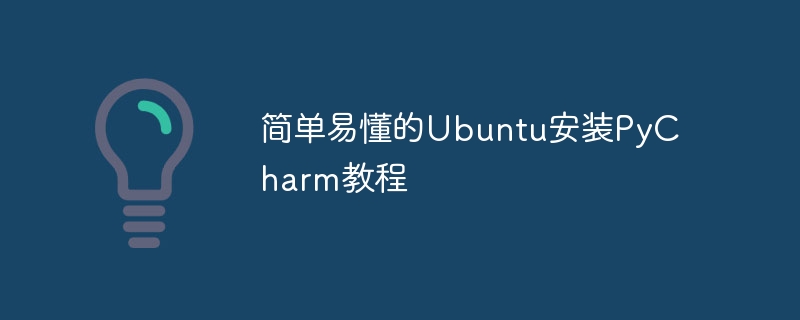Home >Backend Development >Python Tutorial >Easy-to-follow tutorial for installing PyCharm on Ubuntu
Easy-to-follow tutorial for installing PyCharm on Ubuntu
- WBOYOriginal
- 2024-01-04 12:05:402134browse

Simple and easy-to-understand Ubuntu installation PyCharm tutorial
Introduction:
PyCharm is a powerful Python integrated development environment (IDE) with code intelligence Tips, code formatting, debugging features, and more. This article will guide you step by step to install PyCharm on the Ubuntu system, with specific code examples.
Step 1: Check the system version
Before starting to install PyCharm, you first need to confirm the version of the Ubuntu system. Open the terminal and enter the following command:
lsb_release -a
After the command is executed, the terminal will display the system version information to confirm whether it is an Ubuntu system.
Step 2: Install Java Development Kit (JDK)
PyCharm requires Java Development Kit (JDK), so we need to install JDK first. Enter the following commands in the terminal:
sudo apt-get update sudo apt-get install default-jdk
These commands will update the software source of the Ubuntu system and install the default JDK version.
Step 3: Download PyCharm
Enter the following command in the terminal to download the latest version of PyCharm (Community Edition):
wget -O pycharm.tar.gz https://download.jetbrains.com/python/pycharm-community-latest.tar.gz
This command will download a file named pycharm.tar. gz file, which contains the PyCharm installation file.
Step 4: Decompress PyCharm
Enter the following command to decompress the pycharm.tar.gz file you just downloaded:
tar -xzf pycharm.tar.gz
After decompression, a file named pycharm-
Step 5: Start PyCharm
Enter the decompressed pycharm-
cd pycharm-<version>/bin ./pycharm.sh
After PyCharm starts, you can When you see a welcome screen, click "Create New Project" to create a new project.
Step 6: Configure the Python interpreter
In the process of creating the project, you need to configure the Python interpreter. Click the "Project Interpreter" column, then click the settings icon on the right and select "Add Interpreter".
In the pop-up dialog box, you can select an existing Python interpreter in the system, or click "Virtualenv Environment" to create a virtual environment. After clicking "OK", PyCharm will automatically configure the project's Python interpreter.
Step 7: Write and run Python code
You can now write and run Python code in PyCharm. Right-click a file or folder in the project structure tree, select "New" and click "Python File" to create a new Python file.
After writing the code, click "Run" in the menu bar, and then select "Run 'filename.py'" to run the code.
Summary:
By following the above seven steps to install and configure PyCharm on the Ubuntu system, you can already happily use this efficient Python integrated development environment. Hope this article is helpful to you!
(The above article is for reference only, please refer to the official documents for specific operations)
The above is the detailed content of Easy-to-follow tutorial for installing PyCharm on Ubuntu. For more information, please follow other related articles on the PHP Chinese website!

